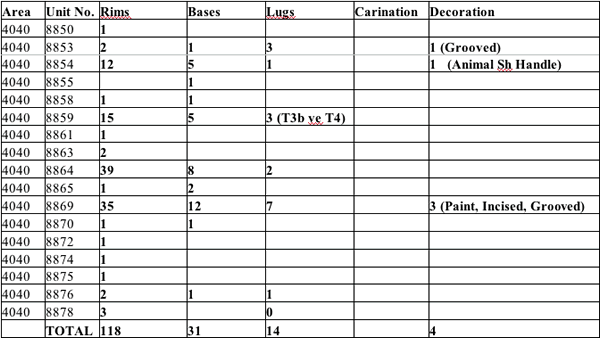ÇATALHÖYÜK 2004 ARCHIVE REPORT
| |
CULTURAL AND ENVIRONMENTAL MATERIALS REPORTS
Pottery
Nurcan Yalman
Istanbul University
Abstract
Pottery was collected from the 4040, South Summit, South and TP Areas under excavation this season from deposits within buildings, rooms and midden like accumulations. 3124 sherds were registered this season and 17 units were fast scanned. It was a very productive season in terms of noting differences in the pottery assemblage at related areas in horizontal and vertical terms. For example it was important to see the difference between Spaces 237 and 227; between Building 45 and Building 49.
Space 237 represents late levels of Neolithic on the north part of the mound whilst TP indicated different (and maybe later) characteristics such as organic + mineral tempered assemblages. Although we can see the latest Neolithic and maybe earliest Chalcolithic pottery tradition in the TP Area, Levels IV-0 have not yet been defined in current excavation areas.
Almost all of the pottery finds were registered and studied but there was still some groups which were left for next year, because of the shortage of time. But the registered and studied groups are enough to get a general idea of the pottery pattern for the each of these areas.
Özet
Bu yıl çalışılan alanlarda (4040, Güney, Summit ve TP) çanak-çömlek bina içlerinden, odalardan ve çöplük dolgularından toplanmıştır. Bu sezonda 3124 çanak-çömlek parçası kaydedilmiş olup, 17 üniteye de genel olarak bakıldı. Değişik alanlardaki çanak-çömlek grupları arasındaki farklılıkları yatay ve dikey düzlemde gözlemleyebilmek açısından oldukça verimli bir sezon olmuştur. Örneğin Alan 237 ve 227 arasındaki farklılıları, aynı şekilde Bina 45 ve Bina 49 arasındaki farklılıkları görebilmek önemlidir.
Alan 237, kuzeyde, Neolitik'in geç evrelerini temsil ederken, TP buluntu topluluğu organik ve mineral katkı anlamında daha farklı (belki de daha geç) bir karaktere sahiptir.TP alanında geç Neolitik ve erken Kalkolitik çanak çömlek geleneğini görmemize rağmen, Seviye IV-0 arası tabakaları bu yıl çalışılan alanlarda henüz tanımlanmamıştır.
4040 Area
Building 45
24 units are registered as stratified body sherds.
16 units are registered as stratified diagnostic sherds.
7 units are registered as stratified unidentified sherds
According to these entries:
| Total Stratified Body Sherds: | 175 | |
| Total Stratified UnIdentified Sherds: | 17 | |
| Total Stratified Diagnostic sherds: | 68 |
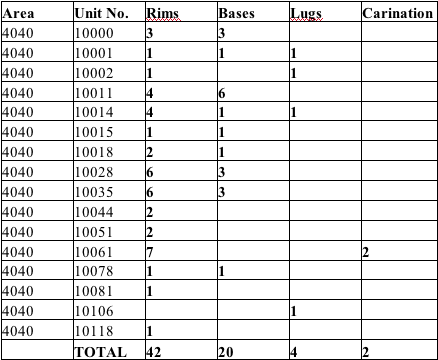
Table 16: Building 45 Recovered and Registered Diagnostic Sherds
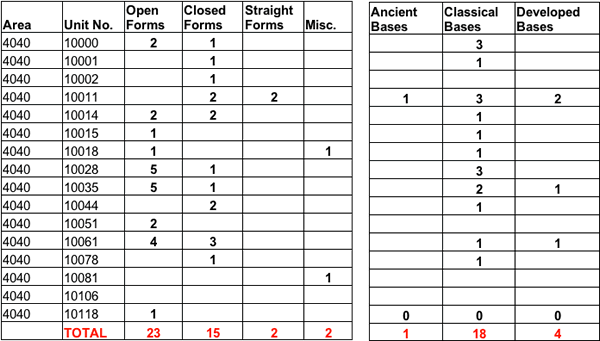
| Table 17: Forms According To Rims | Table 18: Forms According To Base Forms |
The diagnostic sherds indicate a period of change in pottery tradition is in process; the increase of open forms and bowls, the dominance of “classical” bases (which can be seen in many levels especially Level VII-VI) but also the existence of developed bases, some odd shaped bowls such as 10081/S.1 and S.3, indicate that after a period of dark faced burnished ware, some new forms appear. Three of the 4 lugs are flaring in form (T3b) with one perforation. This form is also quite typical for Level V. When we look at the fabrics of the sherds we can see some supportive elements for our suggestion as well. There is no organic tempered sherd, all are mineral tempered. The paste is generally compact with small size inclusions, burnishing on the exterior surface is common. Although the dark colors (brown, grey or dark buff) are dominant the light colors (light buff, light grey, orange, pinkish cream, cream) are increasing. The slipped and mottled sherds are also increasing. Units (10014) and (10018) as some late (non prehistoric) sherds but quite rare.
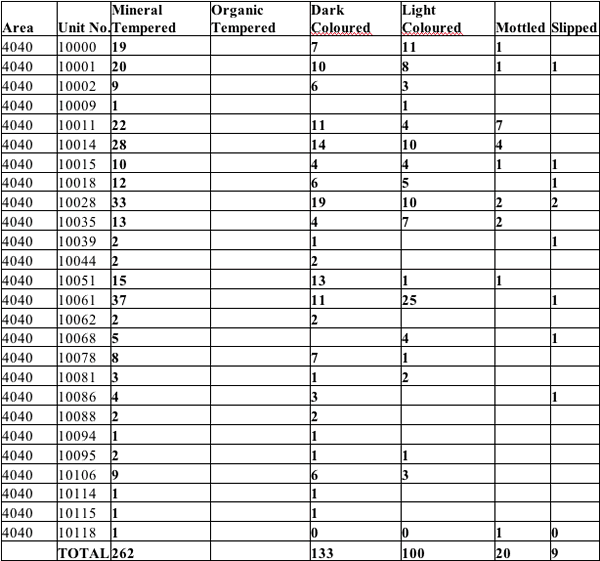
Table 19: Fabrics of the pottery (body & diagnostic herds)
Space 226 & 243
20 units are registered as stratified body sherds.
16 units are registered as stratified diagnostic sherds.
16 units are registered as stratified unidentfied sherds.
According to these entries:
| Total Stratified Body Sherds: | 1471 | |
| Total Stratified UnIdentified Sherds: | 518 | |
| Total Stratified Diagnostic sherds: | 170 |
The variations of fabrics and forms, according to units, of identified and unidentified sherds and diagnostic sherds are given as follows:
Table 20: Space 226 & 243 Recovered and Registered Diagnostic Sherds
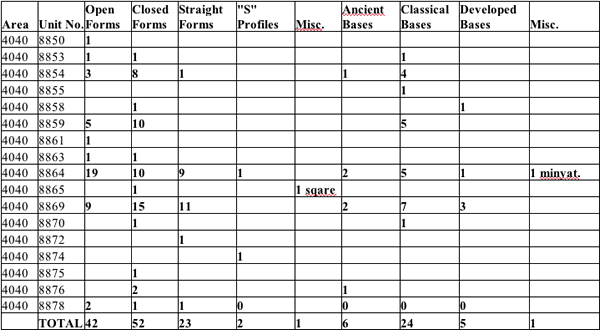
Table 21: Basic Rim and Base Forms
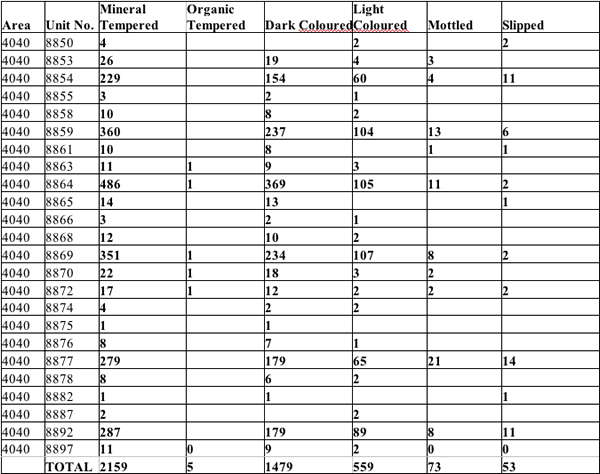
Table 22: Fabrics of the pottery (body & diagnostic herds) of Space 226 & 243
The largest amount of pottery was recovered from Space 226 this year, the area that was thought to have been a kind of street or passage before it was excavated. But the finds and the other characteristics of units from this area, are similar to midden areas at Çatalhöyük.
As we mentioned above, although we have quite large numbers of pottery from some specific units, some of the units are quite poor in pottery. Such as:
(8850) Fill of a Late grave cut.
(8855) A diffuse grave pit (a skull but unidentifiable pit)
(8866) comprises the mudbrick lining of grave F.1452
(8874) comprises a later wall and an odd construction, which looks like half-arch sitting on top of the white clay/plaster (8871).
(8875) comprises a cluster of animal bones.
(8878) comprises the fill under the mudbricks, which formed the ''false bottom'' of burial F.1452.
(8887) Bricks and brick fragments were laid into ashy mortar in an irregular pattern.
Most of the units have late (non prehistoric) sherds, some of them are late burial fills but some are Neolithic units, consequently these late sherds indicate late intrusions. This situation is true also for the Chalcolithic period too. But in general terms the dominant pottery finds point out Level V with the animal shaped, flaring lugs, basket handles, incised decorations, slipped sherds and close numbers of bowls and closed jars. The rare “s” profiled pots may allow us to assume being at the latest stage of Level V or they can also be a reason of intrusion.
Unit (8882) consists of the fill of a pit dug into the midden in Space 226. The cut of the pit was recognized after removal of unit (8877) (midden deposits) but it cuts also through (8869). Most probably it was sealed by (8864). This unit could not registered but scanned and 1 incised decorated sherd has been found. The rare rim sherds are mostly straight and open forms. The dark surface colour is dominant.
Building 47-Space 237 & Space 227
26 units are registered in stratified body sherds.
19 units are registered in stratified diagnostic sherds.
11 units are registered in stratified unidentified sherds.
According to these entries:
| Total Stratified Body Sherds: | 209 | |
| Total Stratified UnIdentified Sherds: | 50 | |
| Total Stratified Diagnostic sherds: | 41 |
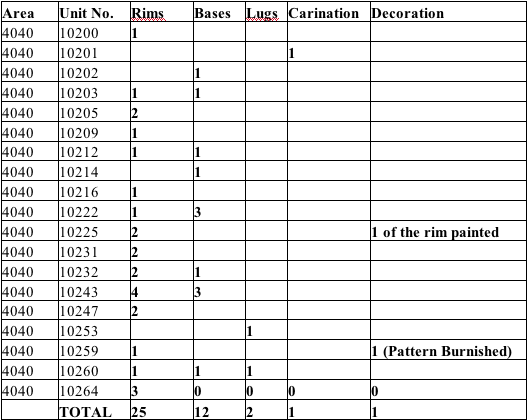
Table 23: Space 237 & 227 Recovered and Registered Diagnostic Sherds
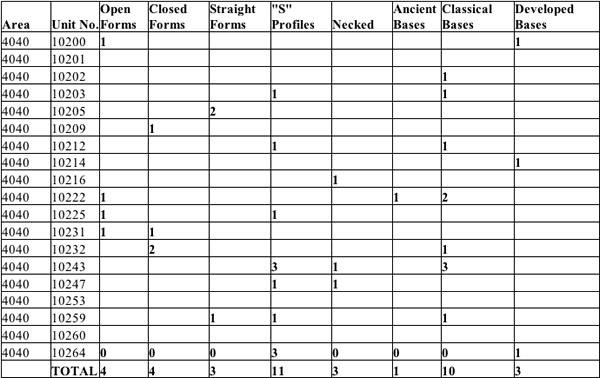
Table 24: Basic Rim and Base Forms
Most of the registered sherds belong to Space 237 and show a clear difference to the Building 45 and Space 226 finds which are possibly Level V. The “s” profiles and necked rim sherds and the general fabrics indicate that they are later than Level V. Interestingly 3 “s” profiled sherds were found in unit (10264) which is a cluster of bones, obsidian and from which figurine 10264.x1 was found was found in Space 227(see Fig. 32).
(10238)- plaster floor , was fast scanned:. 2 large rim sherds were found with straight form, part of a very big pot 360mm diameter. In fabric or the surface colour it is very similar to the early Chalcolithic tradition but the firing looks like Neolithic so maybe, it is possible to say that they represent the transition period. The other sherds are belong to “s” profile forms.
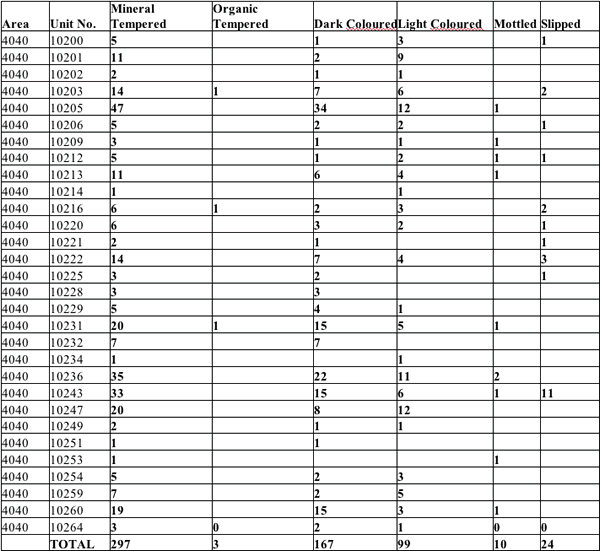
Table 25: Fabrics of the pottery (body & diagnostic herds)
Space 232/240
7 units are registered in stratified body sherds.
2 units are registered in stratified diagnostic sherds.
4 units are registered in stratified unidentified sherds.
According to these entries:
| Total Stratified Body Sherds: | 15 | |
| Total Stratified UnIdentified Sherds: | 5 | |
| Total Stratified Diagnostic sherds: | 2 |
The variations of fabrics and forms, according to units, of identified and unidentified sherds and diagnostic sherds are given as follows:

Table 26: Recovered and Registered Diagnostic Sherds

Table 27:Basic Forms, Found in Space 232/240
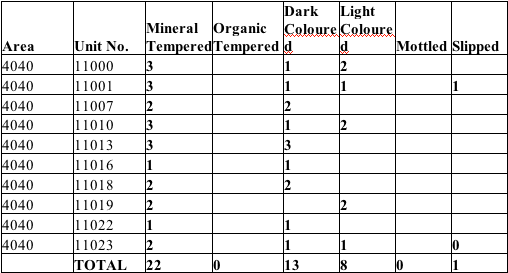
Table 28:Fabrics of the pottery (body & diagnostic herds)
It is quite difficult to make a decision about the level with this amount of pottery and without any indicative sherds.
Spaces 229, 230, 233 & 241
5 units are registered in stratified body sherds.
3 units are registered in stratified diagnostic sherds.
1 units are registered in stratified unidentified sherds.
According to these entries:
| Total Stratified Body Sherds: | 27 | |
| Total Stratified UnIdentified Sherds: | 3 | |
| Total Stratified Diagnostic sherds: | 5 |
The variations of fabrics and forms, according to units, of identified and unidentified sherds and diagnostic sherds are given as follows:

Table 29: Recovered and Registered Diagnostic Sherds

Table 30: Basic Forms, Found in Space 229 - 241
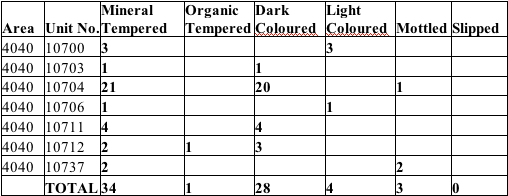
Table 31: Fabrics of the pottery (body & diagnostic herds)
The registered pottery of the units on the tables above, belong to different spaces and mostly cleaning arbitrary units:
(10700): surface cleaning
(10703): Space 229 cleaning unit with construction material.
(10704): Space 230 cleaning unit with building material debris. Most of the pottery sherds come from this unit.
(10706): Space 233 cleaning unit with large ash deposits littered bones and obsidian.
(10711): Space 229 homogeneous room fill
(10712): Space 230
(10733): Space 241 midden layer.
(10737): no description found.
Most of these units are from large areas and even but the amount of pottery is quite low. This situation might indicate lower levels (earlier than VI) but it is hard to be sure as most of the units are arbitrary and have mixed material or clean on purpose such as unit (10711).
The following registered sherds are on the table but (10727), (10740) and (10733) were only scanned quickly at the end of the season:
(10727): large and non prehistoric sherds. 1 coarse organic tempered ring base and 1 dark thin walled mineral tempered, burnished neolithic body sherd.
(10740): non prehistoric sherds.
(10733): 1 neolithic sherd and 1 non prehistoric sherd.
Building 49 – Space 100
10 units are registered in stratified body sherds.
6 units are registered in stratified diagnostic sherds.
2 units are registered in stratified unidentified sherds.
According to these entries:
| Total Stratified Body Sherds: | 27 | |
| Total Stratified UnIdentified Sherds: | 7 | |
| Total Stratified Diagnostic sherds: | 9 |
The variations of fabrics and forms, according to units, of identified and unidentified sherds and diagnostic sherds are given as follows:
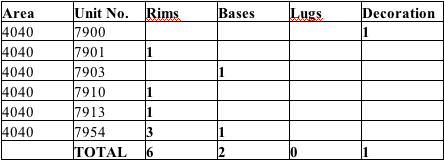
Table 32: Recovered and Registered Diagnostic Sherds

Table 33: Basic Forms, Found in Space 100
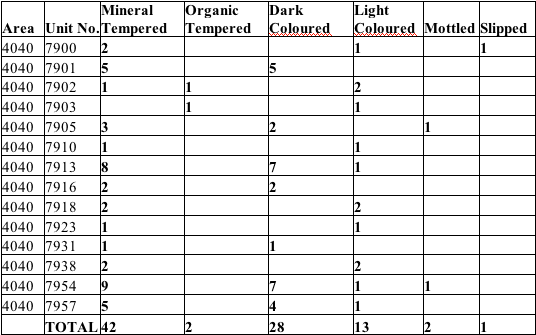
Table 34: Fabrics of the pottery (body & diagnostic herds)
Unit numbers on tables (7900), (7901), (7902), (7903), (7905) are from 2003 excavations.
2004 season units which produce pottery finds are:
(7910) is 5 x 5m cleaning unit
(7913) is fill with fallen mudbrick and plaster pieces.
(7916) room fill
(7918) burial fill
(7923) plaster blocks mixed with room fill.
(7931) room fill
(7938) room fill, excavated as a baulk left against section
(7954) fill in the northwest corner behind partition wall.
(7957) packing material of a truncated platform in the SW corner.
There are only 7 diagnostic sherds from this year. One of them is light coloured, and 1 of them is mottled but the others are dark surface colour. All of them are mineral tempered. It is hard to designate a level because diagnostic sherds are quite rare, but the sherds from unit (7954) have Level VI characteristics in terms of wall thickness, inclusions-paste, surface treatment and colour. But beside that there are some open forms and light colored body sherds, which may indicate Level VI, but we do not have enough evidence (e.g: any typical form).
Building 48 – Spaces 234 & 239
1 unit is registered in stratified body sherds.
2 units are registered in stratified diagnostic sherds.
1 units are registered in stratified unidentified sherds.
According to these entries:
| Total Stratified Body Sherds: | 1 | |
| Total Stratified UnIdentified Sherds: | 1 | |
| Total Stratified Diagnostic sherds: | 2 |
The variations of fabrics and forms, according to units, of identified and unidentified sherds and diagnostic sherds are given as follows:

Table 35: Recovered and Registered Diagnostic Sherds

Table 36: Basic Forms, Found in Space

Table 37: Fabrics of the pottery (body & diagnostic herds)
The pottery is very poor in these spaces. No sherds were found in Space 239 but in Space 233 (latest building's basal layers) and Space 234. There are only two diagnostic sherds. One of them is a rim and belongs to an open form, mineral tempered one was found on an arbitrary and relatively higher in elevation. The base sherd with organic tempered and light buff coloured, thick walled one was found on more safe context which seem to be as a thin layer on a disturbed floor plaster. That sherd has a characteristic form and fabric of the earliest levels of Çatalhöyük East. The rare existence of pottery also supports the idea of being in lower levels but of course the finds are not sufficient to be sure about it.
South Summit Area
Building 44
23 units are registered in stratified body sherds.
12 units are registered in stratified diagnostic sherds.
14 units are registered in stratified unidentified sherds.
According to these entries:
| Total Stratified Body Sherds: | 113 | |
| Total Stratified UnIdentified Sherds: | 105 | |
| Total Stratified Diagnostic sherds: | 16 |
The variations of fabrics and forms, according to units, of identified and unidentified sherds and diagnostic sherds are given as follows:
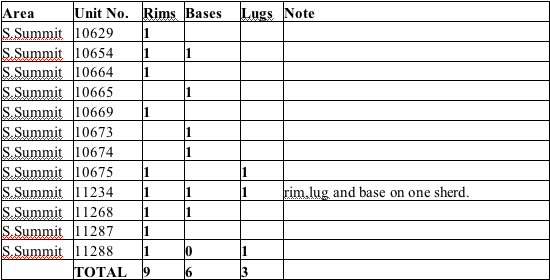
Table 38: Recovered and Registered Diagnostic Sherds
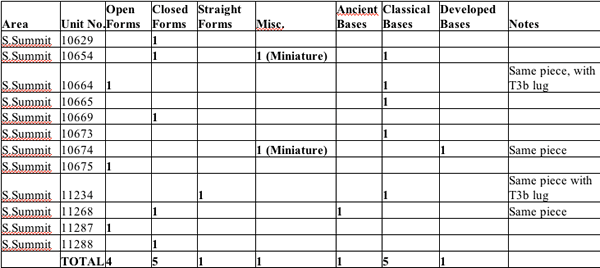
Table 39: Basic Forms, Found in Building 44
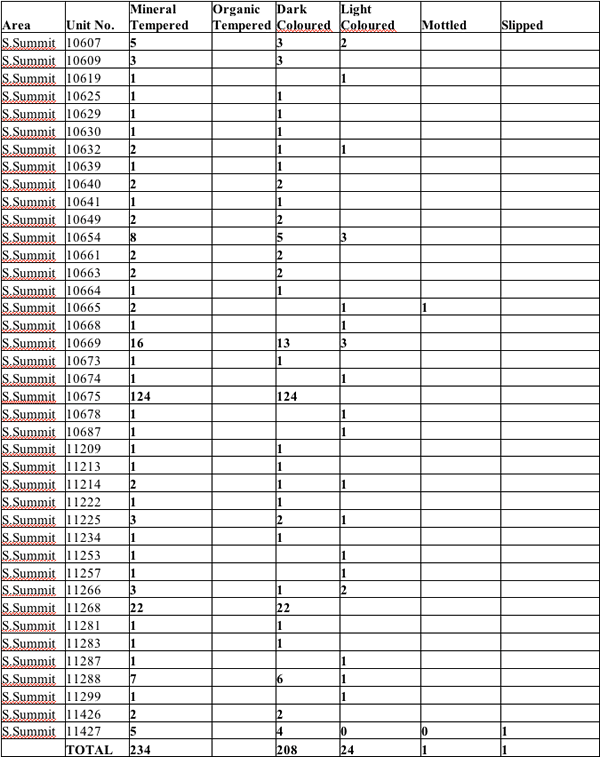
Table 40: Fabrics of the pottery (body & diagnostic herds)
South Summit has the largest amount of in situ pottery contexts of this season. Pottery was most concentrated to the south of Building 44, along with stone clusters which are possibly related to each other.
Unit (10673) (a “classical” base, medium size mineral tempered), (10674) (a small pot, maybe a miniature, pinkish cream/reddish in colour, an open bowl with a developed-raised base) and (10675) (open bowl, greyish in colour and has pointed lug with one perforation, coarse mineral tempered, found as pieces but unfortunately the rim and lug sherds do not join) were at the same level and same floor. The other clusters are (10664) an open bowl with a classical base and a flaring lug, (10665) another “classical” base, mottled on the external surface and medium sized mineral tempered, (10669) a holemouth pot with coarse mineral temper and dark coloured unit . These were all part of feature F.1325. According to the excavators these clusters seem to be later than the oven. The other clusters which are related to hearth F.1328 or oven F.1326; (11268) a holemouth rim and a ancient type flat and round edged base, (11234) a straight walled and flaring lugged pot and (11235).
The texture and the forms are quite like Level V with miniature pots and especially flaring lugs and increase of open forms.
South Area
Building 42
12 units are registered in stratified body sherds.
5 units are registered in stratified diagnostic sherds.
5 units are registered in stratified unidentified sherds.
According to these entries:
| Total Stratified Body Sherds: | 35 | |
| Total Stratified UnIdentified Sherds: | 11 | |
| Total Stratified Diagnostic sherds: | 7 |
The variations of fabrics and forms, according to units, of identified and unidentified sherds and diagnostic sherds are given as follows:

Table 41: Recovered and Registered Diagnostic Sherds

Table 42: Basic Forms, Found in Building 42
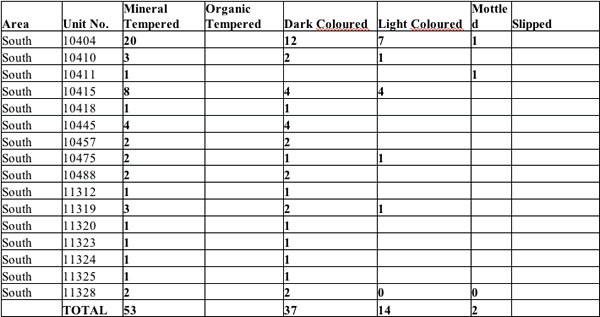
Table 43: Fabrics of the pottery (body & diagnostic herds)
Most of the sherds are from room fill (10404) but there are some late (non-prehistoric) sherds as well. Unit (10415) has one “S” profiled sherd but also late sherds which may show some intrusion. The complete absence of organic tempered sherds, the clear dominance of dark coloured surfaces and the absence of slipped sherds might indicate Level VI.
Building 43
2 units are registered in stratified body sherds.
1 units are registered in stratified diagnostic sherds.
0 units are registered in stratified unidentified sherds.
According to these entries:
| Total Stratified Body Sherds: | 2 | |
| Total Stratified UnIdentified Sherds: | 0 | |
| Total Stratified Diagnostic sherds: | 1 |
The variations of fabrics and forms, according to units, of identified and unidentified sherds and diagnostic sherds are given as follows:

Table 44: Recovered and Registered Diagnostic Sherds

Table 45: Basic Forms, Found in Building 43

Table 46: Fabrics of the pottery (body & diagnostic herds)
Unit (10500) has some non prehistoric sherds but there is a general absence of pottery. There are only three Neolithic period sherds and they show the characteristics of earlier levels of Çatalhöyük with their organic temper and the only diagnostic sherd is an ancient type of base.
Building 50, Spaces 112 & 231
3 units are registered in stratified body sherds.
0 units are registered in stratified diagnostic sherds.
0 units are registered in stratified unidentified sherds.
According to these entries:
| Total Stratified Body Sherds: | 3 | |
| Total Stratified UnIdentified Sherds: | 0 | |
| Total Stratified Diagnostic sherds: | 0 |
The variations of fabrics and forms, according to units, of identified and unidentified sherds and diagnostic sherds are given as follows:

Table 47: Fabrics of the pottery
The fabric of the very rare pottery finds are quite consistent with this Level VII building.
Conclusion
The results of this report are based on the registered sherds of the 2004 excavation season only, the non registered sherds might slightly change the percentages.
All the suggestions that we made above, are reliant on the stratigraphy of the South Area. The north of the site might have slightly different stratigraphy or level-date relationship, than the south. It will be clear with the C14 dates.
The 2004 season was very productive in defining differences on pottery at related areas in horizontal and vertical terms. For example it was important to see the difference between Spaces 237 and 227; between Buildings 45 and Building 49.
Space 237 represents the late levels of the Neolithic for north part of the mound but TP shows different (and maybe later) characteristics such as organic + mineral tempered assemblages. Although we can see the latest Neolithic and maybe earliest Chalcolithic pottery tradition in the TP area, the late pottery ](Level IV-0) has not been defined in detail such as level III-II-I-0, for the East mound; we still have a an absence of late Neolithic stratified levels.
